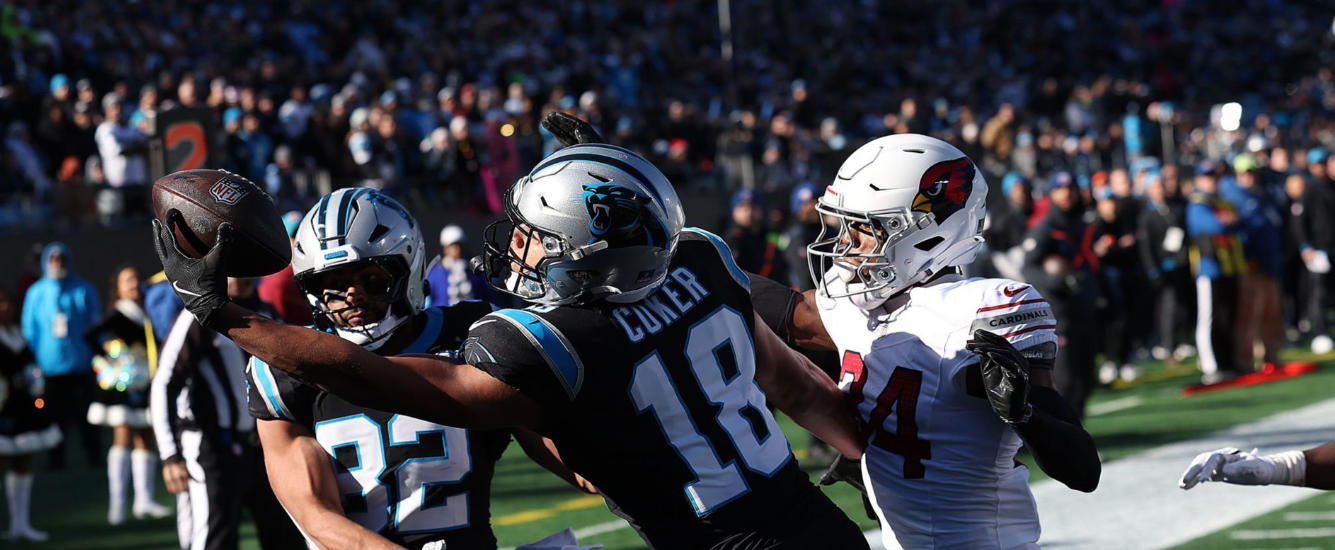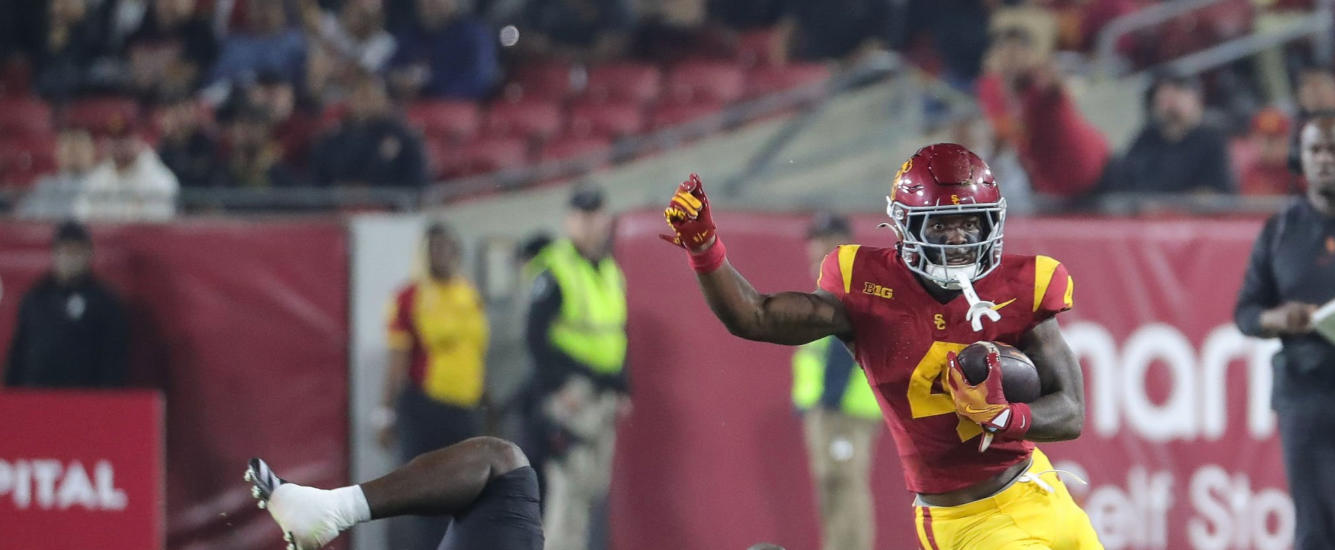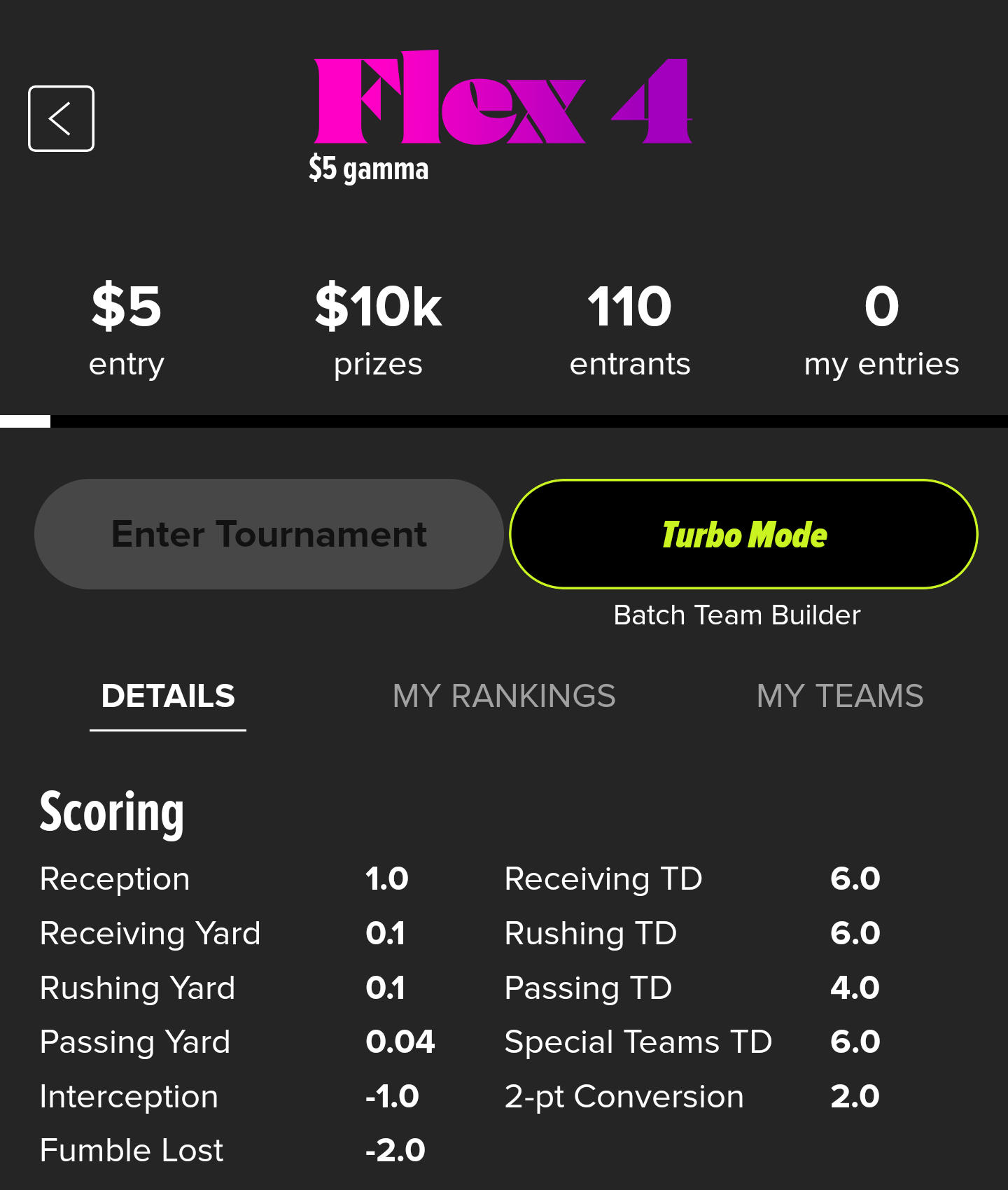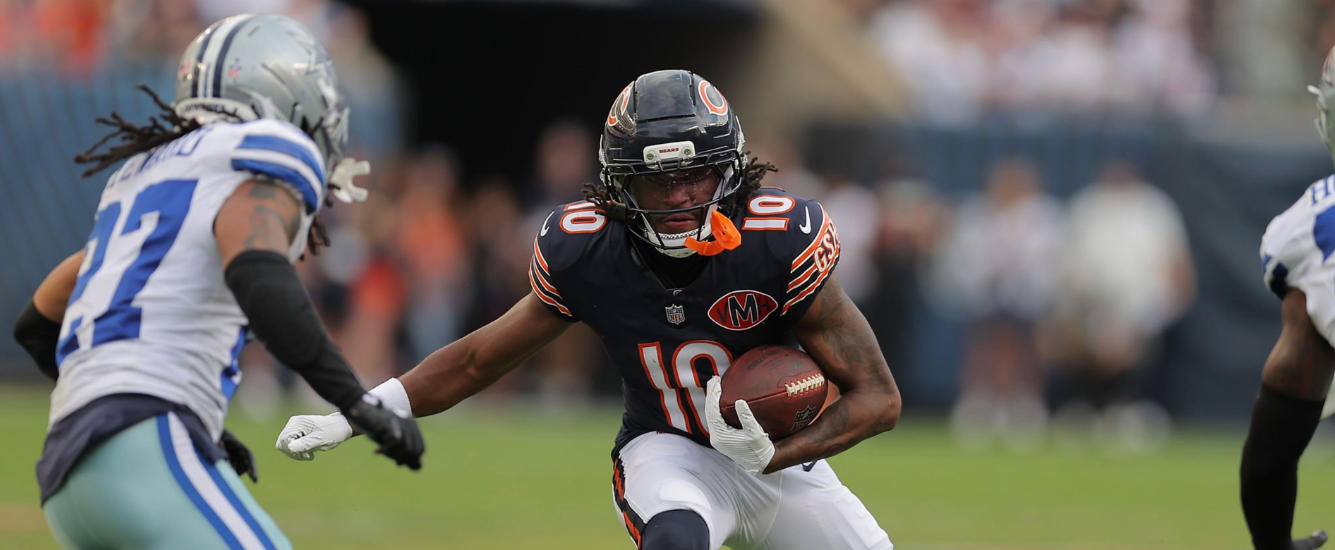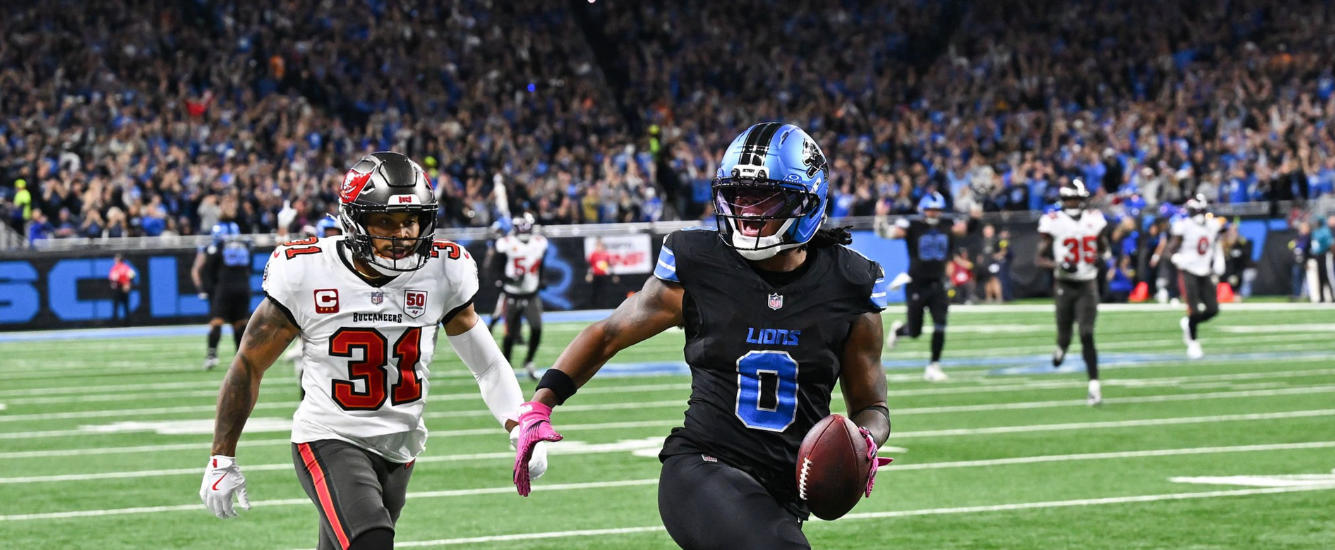Kevin Szafraniec discusses why the unique format of FastDraft’s Flex 4 contest has quickly become one of his favorite ways to play best ball. The tournament’s innovative structure leads to unique strategies to exploit the contest’s early edges.
As a fantasy manager who is always looking for fresh and exciting ways to play the game I love, the Flex 4 contest on the FastDraft app immediately piqued my interest. Throwing quarterbacks out the window and focusing solely on wide receivers, running backs, and tight ends on a slimmed-down roster necessitates a complete mindset shift. Many of the rules of thumb that have become commonplace in most best ball contests simply won’t work here.
Over the summer, Flex 4 has quickly become one of my favorite best ball contests, in addition to FastDraft’s similarly structured rookie-only Origins tournaments. As these contests continue to grow, their unique settings offer sharp fantasy managers edges that can be exploited while the fantasy community at large adapts to the innovative features that these formats present. Today, we will take a look at what makes FastDraft’s Flex 4 contest so much fun, while highlighting the strategies I have uncovered along the way.
Are you ready to jump into a Flex 4 draft and explore all of the contests FastDraft has to offer? Get up to a $50 match on your first deposit when you sign up with the code ROTOVIZ!
Giving a Whole New Meaning to “Winning the Flex”
Flex 4 drafts consist of 10 teams filling out six roster spots with nothing but running backs, wide receivers, and tight ends, with a third-round reversal providing an added wrinkle to the traditional snake-draft format. There are no positional designations to fill, with the baseline scoring settings following traditional PPR rules. However, once drafts are complete, Flex 4 throws in an added twist that will help supercharge lineups, which we will cover later on.
Weekly lineups consist of each team’s four top-scoring players, with the scoring being cumulative over Weeks 1-17 of the NFL season.
5 Chances to Hone in Your Strategy Before Ever Spending a Penny
In order to get a feel for the Flex 4 format, FastDraft offers a free contest to beginners with a max entry of five teams. However, this is not simply a chance to run some mock drafts, as there is $1,000 worth of promo funds for the fantasy manager who comes out on top!
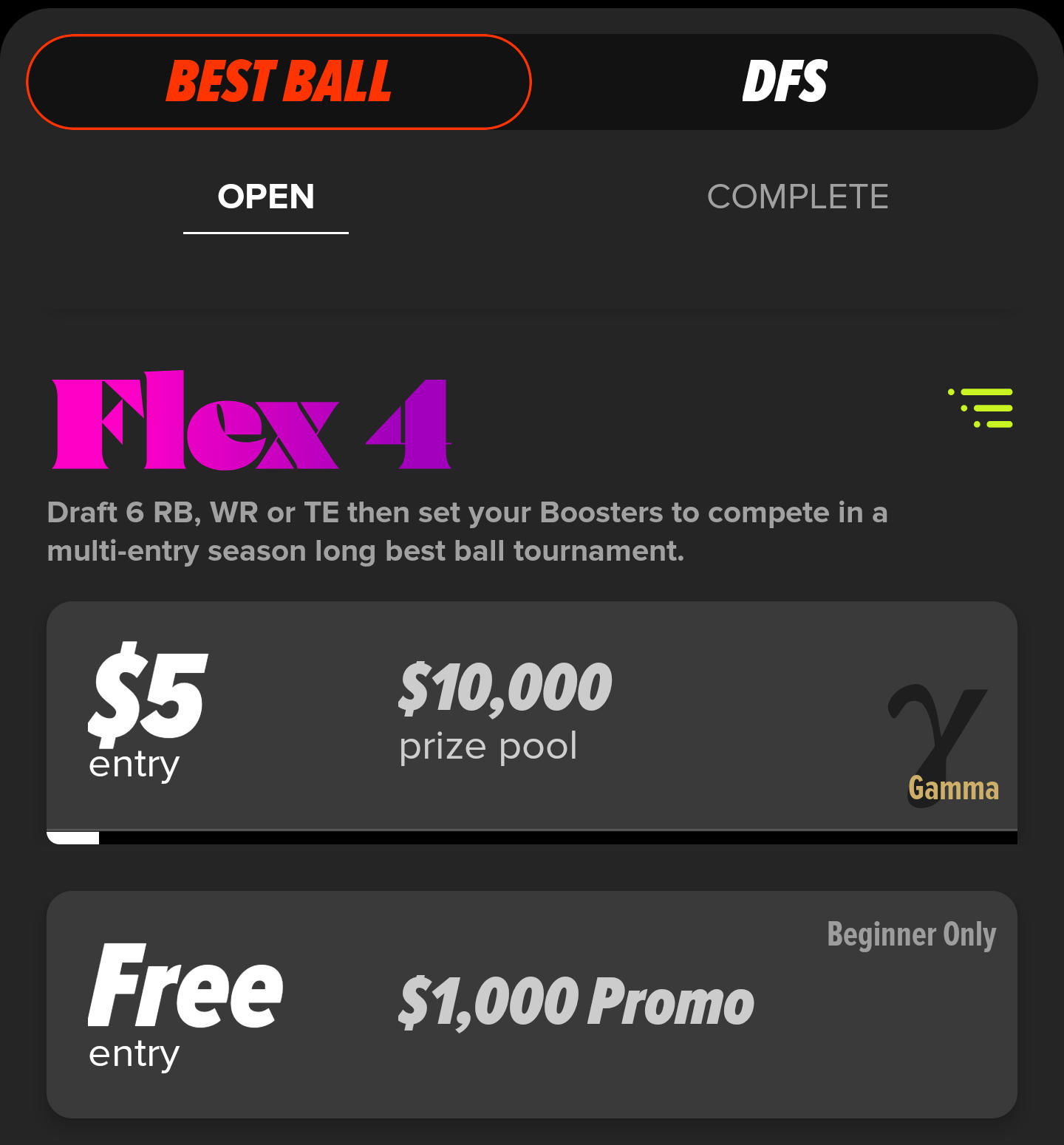
Bye Weeks and Correlation
Given the small roster sizes, one of the most important aspects of building a Flex 4 roster is to avoid drafting players with the same bye weeks. This obviously makes stacking a big no-no, with its benefits becoming more or less nullified with quarterbacks being taken out of the equation anyway.
With only six roster spots total to fill out the four-player starting lineup, having one player on a bye in any given week represents a huge disadvantage. If we add in injury risk on top of that, there is a good chance that fantasy managers could find themselves relying on four players at least once during the bye week barrage. If we draft multiple players with the same bye, the risk of not having enough players to fill out our starting lineups during that week grows exponentially, introducing unnecessary risk that diminishes our chances of winning.
Although avoiding players with the same bye week may seem like an easy rule to follow, keeping track while sorting through available players on a 20-second clock can be harder than expected. For this reason, keeping your queue filled with potential targets as your pick draws near is a solid practice for avoiding potential bye-week blunders.
The winner of the contest is determined by cumulative points, so correlation plays during the final weeks of the contest do not hold the same value as in many other best ball formats. If there is any edge to be gained from looking for correlations, it may come via high-scoring divisional matchups (think Bengals-Ravens in 2024). But even then, the advantage gained in most instances would be slight and would only provide a boost for two weeks out of the season. (If you intend to use this strategy, it would be wise to avoid teams whose second divisional matchup occurs in Week 18, as the contest will have already ended. This rules out a handful of otherwise attractive pairings, like Packers-Vikings, Eagles-Commanders, and Seahawks-49ers.)
The Third-Round Reversal Provides an Edge to Late Draft Slots
In 2025 drafts, it is difficult not to believe that drawing a slot at the back of the draft order is the optimal way to build out best ball rosters. However, Flex 4’s third-round reversal appears to supercharge late draft slots by allowing fantasy managers at the end of the draft order an opportunity to pick up another sliding star at the start of Round 3.
Obviously, there is no way to land one of the final slots in the draft order except through sheer luck. However, the third-round reversal may only represent such a pronounced edge due to the 2025 ADP environment. It is generally a feature that levels out the advantage drafters who draw early slots receive via their access to elite talents at the top of drafts.
A Concentrated Player Pool
Each Flex 4 draft consists of 60 players, which would represent the first five rounds of a 12-team league. Over the past five seasons, here is a breakdown of how each position ranks when looking at the top 60 in PPR scoring among Flex-eligible players.
| Position | Average Number in Top 60 Flex Eligible (PPR Scoring, 2020-2024) | High Number | Low Number |
|---|---|---|---|
| Wide Receiver | 33.4 | 37 | 32 |
| Running Back | 22.4 | 24 | 21 |
| Tight End | 4.2 | 6 | 2 |




